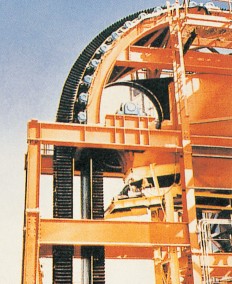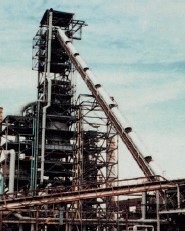Belt conveyor with corrugate sidewalls is widely used for feeding in applications of ports, metallurgy, mines, casting, construction materials, grain and fertilizer. This type of conveyor could feed bulk materials of different sorts at angle of 0~90 degree, and it is endowed with advantages, like wide angle, wide applications, little space, no transshipment point, less construction investment, low maintenance fee, large capacity of transportation and cost reduction of general engineering design to great extend. It is an ideal substitute for chain elevators and bucket elevators.


No material may leak from this type of conveyor operating at wide angle fitted with the recycle material collecting device designed by our own company, resulting in no need of periodical cleaning and properly resolution to material leak caused by over long coming material section and material collection issue at the concave curve section. The device has the following advantages: environmental protection, durable, compact frame, reasonable design, low maintenance cost to great extend, it could be interlocked with the main equipment or be used separately.


Our company has been manufacturing over 1,300 belt conveyor with corrugate sidewalls since 1986 which is popular to customers.
Currently, our company is devoting into perfection of this type of conveyor and we have gained several national utility patents during science research and development of this product.
Layout of Belt Conveyor with Corrugate Sidewalls

“-”horizontal or incline angle big incline angle of I type big incline angle of L type big incline angle of S type

Revise L type Vertical S type big angle of C type mine of open type
Main technical parameters
※Base belt width: B300~B2000mm
※Maximum hoisting height: 500m for single conveyor, concatenation of several conveyors is available
※Angle: 0~90 degree
※Belt speed: 0.1~4.0m/s




Transportation capacity (m/h)of DJC belt conveyor with corrugate sidewalls at wide angle is 1m/s(m3/h)


Note:
1. W=Width
2. SBSP = Space between stopping plates
3. SBIP = Space between isolating plates

